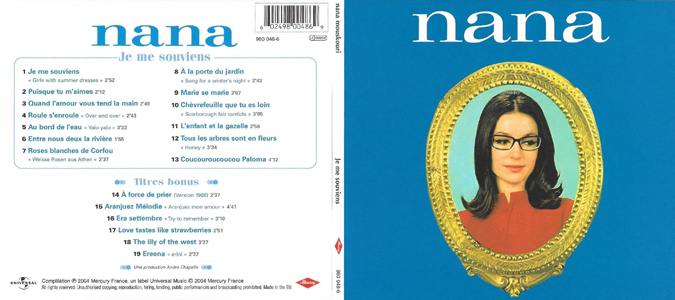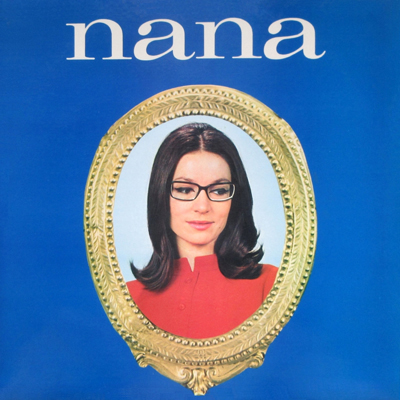
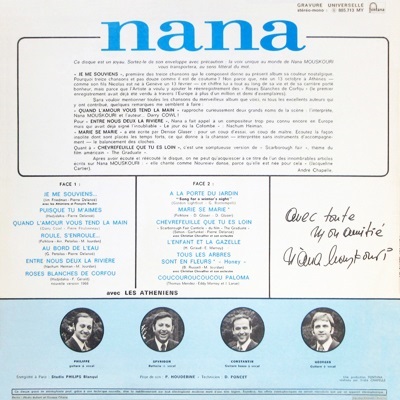
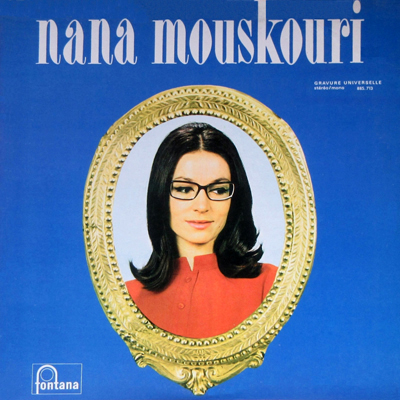
Je me souviens
Favourite album
MY CHOICE
Here I am to present you my third favourite. This album has followed me all my life since it was given to me when I was six years old. To understand better the context of the release of this LP, we have to know that it followed Nanaís consecration with the French public. followed Nanaís consecration with the French public. In fact, in 1968, she did three tours in the French-speaking countries of Europe. At that time, EPs were selling more. There, eleven of the thirteen tracks were released on 45 rpm discs. In Quebec, six. This success continued during her East Canadian tour from January to March 1969.
THE COVER
On the blue cover, thereís a photo of Nana in a medallion. She is wearing a red ensemble and is looking aside. In Europe, only her first name is indicated. While in Canada, her whole name appears. On the back cover, thereís a blurb of her producer Andrť Chapelle, the song list and a photo of each Athenian. On the label of the Canadian record appears: "Nana Mouskouri se souvient...". On the cover, the title is not identified. It will only be on the back cover of the digipack CD.



THE CONTENT
This album was released in the fall of 1968. Described as a gem by its producer, it consists of thirteen songs. Whether from other origins or from folklore, Nana turned to her main lyricists: Pierre DelanoŽ, Michel Jourdan and Eddy Marnay. For almost all of the titles, The Athenians, her ensemble, accompany her as much with their voice as with their instrument.
SIDE 1
01- "Je me souviens", is the French version of "Girls with summer dresses" that Harry Belafonte recorded a couple of years before. Itís not the kind of commercial hit released on singles or included in compilations of successes. Moreover, the chosen musical accompaniment is sober: light percussion, guitars in tandem and intensifying violins. But what a pleasure to hear Nana telling us that as a young girl she proudly wore her white dress! |
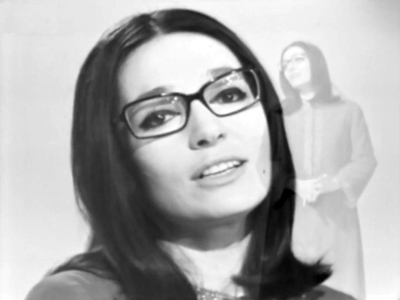 |
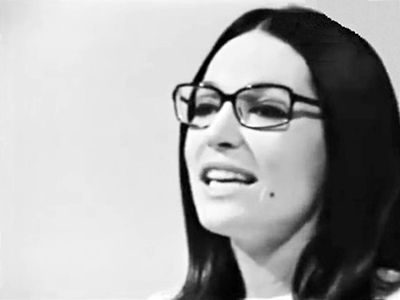 |
02- The melody of "Puisque tu m'aimes" is taken from the documentary film behind Nana's success in Germany: "Greece, Dreamland of Desire". French lyrics fit perfectly with the music. A woman tells her lover that time has passed since their engagement and she asks him to marry her quickly as he promised her. In one of the verses, to convince him, she says sheís the ideal woman: ę Je sais coudre et repasser et faire des crÍpes. Je sais comment il faut soigner les piqŻres de guÍpes. Ľ (I can sew and iron and make pancakes. I know how to treat wasp stings.) Nana kept it in her performing repertoire for years. |
03- "Quand l’amour vous tend la main", the least known of this collection, is simple and well interpreted. Nana doesn't need more than a few musicians to accompany her. Most of the music is in her voice. When Love extends the hand to you, youíve got to hold it tight to keep it. We must never forget that we always need Love. |
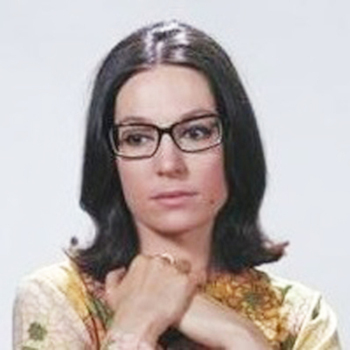 |
 |
04- "Tumbalalaika" is a Russian Jewish folk song. With French lyrics, it became "Roule s’enroule". It's a tune that is easily remembered. We only have to repeat the title and the rest comes naturally. Nana sings that she lives for two, that her life unites with his own, and he hums the tender song she loves to hear. No wonder that it became the album's selling cut and is often sung at weddings. In fact, Nana recorded it in four languages. In English, it will be the title of her next album. |
05- In each one of her albums, there is at least one tune from her country, a way of recalling her origins. This time, a folklore entitled "Yalo yalo" which became "Au bord de l’eau". For the arrangements, she opted for soft music with guitar and moderate percussion. Birds are chirping, winter is over and she thinks of the sea. Maybe itís not the most famous song of her repertoire, but Nana has recorded four distinct versions of it in four languages. |
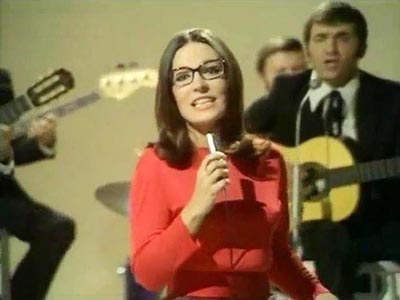 |
|
06- "Entre nous deux la rivière" lasts less than two minutes. The old stone bridge has broken. Two people are separated by the river. They envy the birds that can fly from side to side and wish winter would come so they could cross on the ice and get together. |
07- "Roses blanches de Corfou" has been for her like a passport to make career outside her country. She recorded it in five languages and sold more than 1.5 million copies throughout Europe. As this song brought her luck, Nana decided to add a re-recording for this album. This brings to thirteen, her lucky number, the number of songs. With The Athenians, she did a shorter version with just one verse. Itís good to hear her again with her fellow countrymen. |
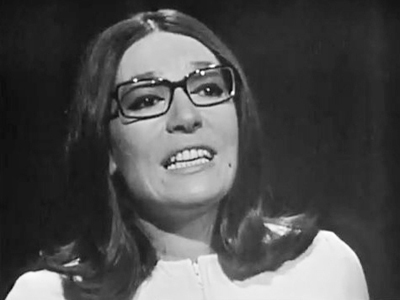 |
SIDE 2
|
01- At the time of the album's release, the name of the composer of "À la porte du jardin" was unknown. By recording the original version, "Song for a winter's night", Nana discovered that it was Gordon Lightfoot: one winter evening, alone in his chalet, he has the blues and imagines that he is in the company of his wife. In French, she is sad to see her husband leaving and must await his return until night fall. Each one demonstrates a different sensitivity. |
02- On folk music, the TV host Denise Glaser devoted herself to writing. The result: "Marie se marie". We are invited to the wedding of Marie and FranÁois. The bells are ringing, the birds are singing. For them, itís the happiest day. I don't know which adjective to choose to qualify this song. Original or unusual? However, itís a success. It is sung without instruments, only with the voices of the Athenians and Nana. |
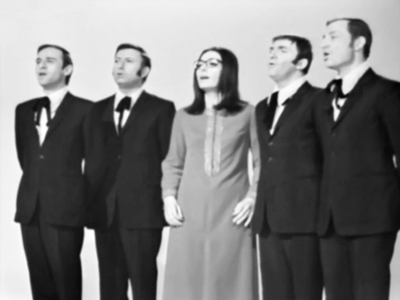 |
|
03- "Chèvrefeuille que tu es loin" is the French version of "Scarborough fair / Canticle" by Simon and Garfunkle, as sung in the movie "The graduate". Scarborough, the fair where merchants gather. And, honeysuckle, a climbing shrub. It can be a way of referring to home. Here, a boy asks his former lover to sew a shirt for him, to find him an acre of land. He also wants her to bury him with her own hands. A great classic covered by a great performer! |
04- For years, Nana performed "L’enfant et la gazelle" in her concerts. In this legend, a copper skinned child and a gazelle were born on the same day. They developed a friendship until they were separated and it be fired. They say that the child leaves early in the morning and only returns home at night and cries like gazelles. In 1971, Nana did a softer version for children. The composer Hubert Giraud has much to be proud of the result! |
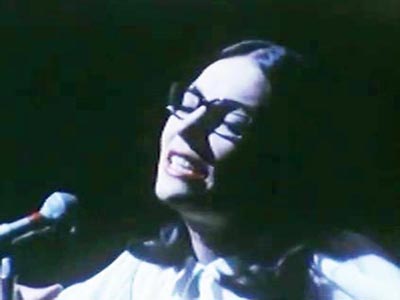 |
|
05- "Tous les arbres sont en fleurs", the biggest hit from this album, was popularized by Bobby Goldsboro as "Honey". The lyrics are touching and Nanaís interpretation leads us to believe that itís a true story. In this one, a woman tells her husband that their garden is flowered as he loved it. She remembers him telling her that they would never leave each other and she believed it. She confesses to him: ę Pierre, je t'aime. Je n'avais que toi. Mais tu n'es plus qu'une ombre qui dort prŤs de moi.Ľ (Pierre, I love you. You were all I had. But you're just a shadow sleeping next to me.) Do you have to listen to the end to understand that he has fallen into sleep forever? She ends by saying that they say that in another world there is a more beautiful garden where her Love keeps enjoying life. |
06- Nana knew "Coucouroucoucou paloma" especially through Harry Belafonte who interpreted it in his shows. She says that her heart is free. The one who loves her will take hers. And, she sings the refrain to the flying bird. With a Mexican song, we can party, especially in front of an audience. Thatís why, when the opportunity arises, she enjoys cooing like a bird and stretching the notes. The public appreciates and gets excited. |
 |
WHY THIS CHOICE?
If I chose this record, itís because something distinguishes it from the others. I believe that is the sweetness with which Nana performs her songs. Itís even more obvious if we compare it with "ņ force de prier", for example. Barely five years separate these two albums. But in the meantime, Nana has come a long way. This leads me to say that "Je me souviens" is one of her best French albums, especially since it includes a thirteenth song and that it be her big hit "Roses blanches de Corfou".
A FAVOURITE
Occasionally, I like to pick up this record from my music library to listen to it in part or in whole. If I have time to lay down on my sofa, I close my eyes and Iím fulfilled. Like the other LPs of the same period, it was released in different formats: on 8-track cartridge, cassette and as digipack CD with six bonus tracks. Itís also available on online music sites. After having made such a good choice, will I be able to find another favourite to share with you? In the meantime, do like me: go back to your records and pay attention to the nuances.
